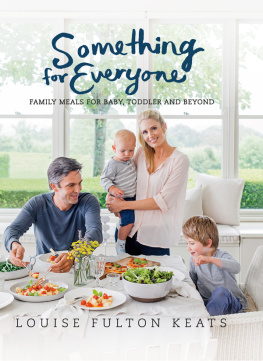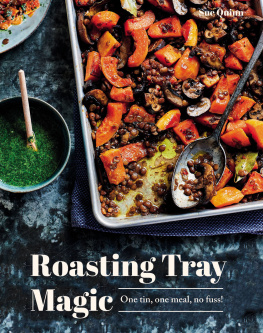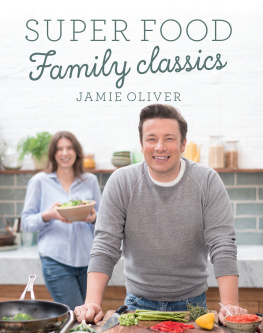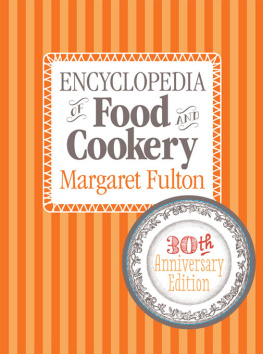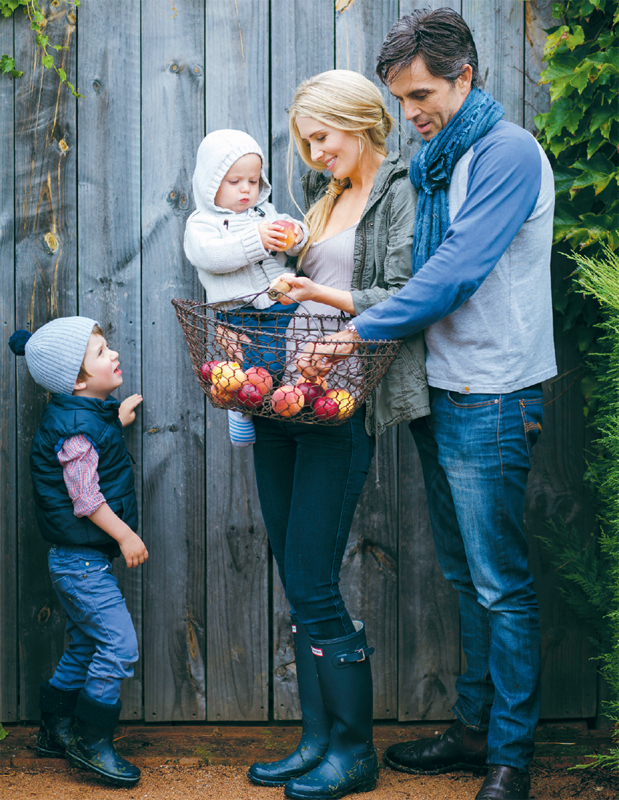ACKNOWLEDGEMENTS
This book would never have come to life without the many helping hands of my wonderful family and friends.
Thank you from the bottom of my heart to Suzanne Gibbs and Steve Lewis, who have both been by my side throughout this project, helping at photo shoots and providing unwavering support. Id have been lost without you.
To Claire and Hughie Dunne and their perfect baby, Davin, who appears throughout this book. Thank you so much for your boundless patience and generosity; your Davin is a total joy.
To Ruth Maddigan and Bob Dwyer for the use of their stunning Highlands home for our location shoot and for their extraordinary warmth and care. We feel very blessed to have you as neighbours.
To the bunny A-team and the best in the business: Ben Dearnley, Michelle Noerianto and Kerrie Ray. Thank you for yet again delivering the most exceptionally beautiful photographs while keeping it such fun. Time with the three of you is always a treasure.
My heartfelt thanks to all the team at Hardie Grant for this wonderful opportunity: Paul McNally, Lucy Heaver, Jacqueline Blanchard and Megan Ellis, as well as the stunning book design from Arielle Gamble. Im ever-so grateful for all of your varied and extraordinary talents and your unwavering dedication to this project. Paul and Lucy, your ongoing support means the world.
Finally to the best family a girl could have: John, Harry, Mum, Dad, Grandma, Kate and Ben. A million thank yous for your patience and encouragement. I love you to bits.
Contents
When I was a child, my parents were pretty firm about sticking to a routine where as a family we would sit down together each night, share a meal and chat about our day. I remember occasionally thinking how boring that was, at least compared with some other children I knew who were lucky enough to have dinner in front of the television, often eating at a different time from their parents. Yet, fundamentally, I also knew that it was a good thing to do, that it was valuable for all of us, that I was fortunate to come from a family who set the table and made the effort; I just didnt know why.
As a food and nutrition writer, understanding the why is now part of my work. The subject of family meals comes up time and again across a range of research subjects from babys taste preferences to teenage alcohol abuse and, repeatedly, the same conclusion is reached: family meals produce extraordinary outcomes for kids. Not only do children who sit down with their parents eat more nutritious foods, theyre also more likely to perform well at school, and are less likely to end up with an eating disorder or a drug or alcohol problem. Best of all, as teenagers, theyre more likely to say that their parents really know whats going on in their lives.
There are huge benefits to be gained from including your child in family mealtimes from the outset, as soon as she begins eating solids. For a start, shell be seeing food in its whole form, instead of just as a pure. This will help build her familiarity with different ingredients and reduce her chances of being a fussy eater down the track. It will also help her develop a taste for your home cooking. Plus, it spares you from the bane of every busy parents life having to prepare two different dinners each night.
My great hope is that this book might help more families sit down together for a meal and share the same foods. When I think of how this simple act can profoundly affect the health and happiness of an entire generation, it seems to me that its a goal worth prioritising.
Having said that, Im also conscious of the food we provide our children being yet another source of comparison in the super-competitive world of parenting, where so many of us feel like were always falling short. I confess I often feel the pressure of trying to recreate the near-perfect home environment that I grew up in. I can now see just how hard my parents had to work to provide it. So, although there are unquestionable benefits arising from giving your children nourishing, home-cooked meals, and sitting down at the table with them to eat, I dont believe it should come at the cost of your enjoyment of parenthood. So if what gets you through the week is your Saturday movie night with a pizza and a glass of wine, keep it up!
My overarching philosophy is that cooking for your children should be simple and relaxed. As a working mum, I certainly dont have time to make complex dishes. I hope this book gives you the confidence to navigate those early years of feeding your children, without feeling like you have to cook special, individual meals for every member of the family. Thankfully, the best thing for them is also the best for you sharing one meal.
BABY AND TODDLER RECIPE ADAPTATIONS
Unless otherwise noted, all of the recipes in this book are suitable for babies aged 6 months and older. Each recipe provides adaptations for both younger babies (69 months as a guide) and older babies (10 12 months as a guide), as well as toddlers (1 4 years as a guide).
Where a recipe adaptation refers to your babys milk, you may use either expressed breast milk or formula milk. It is fine to use a little cows milk in cooking from time to time, however it is not as nutrient-dense as your babys drinking milk, and it definitely shouldnt be served as a drink in your babys first year.
The key thing to remember when cooking for babies is to take care not to use any ingredients that arent suitable for them, such as honey, raw eggs, salt and any choking hazards. There is a full list of , which you should read carefully if you are preparing food for a young child.
For a guide to starting your baby on solids and adapting family meals, see .
SERVING SIZES
Because babies, toddlers and older children eat such widely varying amounts, the serving sizes given in this book are for adults. In the case of baby pures, its quite useful to have an adult-sized serving for your baby, because you can set aside one portion and then freeze the remainder in separate portions for later meals. In the case of your toddler or older child, you may like to adjust the quantities according to her usual appetite.
SEASONINGS
As a general rule, the recipes in this book dont include salt and pepper. Added salt is bad news for younger children in particular their less mature kidneys cant cope. Furthermore, too much can give them a taste preference for salty foods, which can have long-term health implications. Pepper is great nutritionally, but many children find it too spicy. However, you might wish to add a little, gradually increasing the amount, to help your child develop a liking for it. After setting aside your childs serving, by all means season your food as you normally would (although most adults would benefit from a lower-salt diet too).
RECIPE SYMBOLS KEY
 | nut free (may contain sesame) |
 | gluten free |
 | dairy free |
 |

